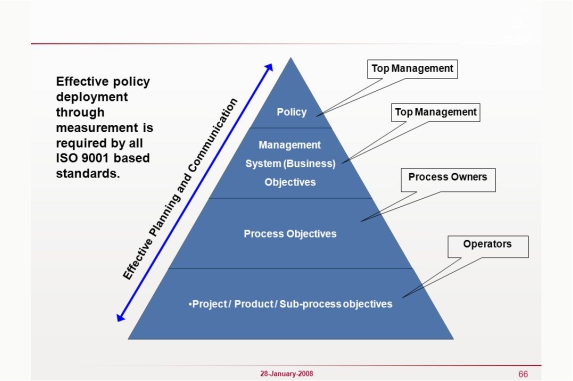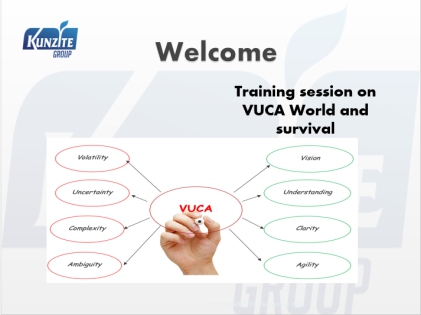Examples of suitable evidence
In order to provide suitable evidence of Top Management involvement and engagement, documented information must be provided, along with actions assigned as appropriate.
The tables below provide an indication of actions that could be considered as objective evidence to demonstrate Top Management are undertaking effective leadership, commitment and accountability.

Examples of suitable evidence
Records of the quality management system (QMS) being discussed at board meetings to demonstrate it is embedded in the organization’s business processes
Active involvement in the review of the organization’s QMS, at planned intervals, with minutes including detailed information of who was present, what was discussed and action points agreed
The use of the process approach when setting or reviewing the organization’s internal processes, including active involvement in the review of its risk and opportunities
The use of a robust internal audit system with associated corrective actions where applicable
Appropriate monitoring and measuring systems looking at discrete areas
Active involvement in the setting of the quality policy, rather than just signing it
Customer focus
Appropriate documented information to demonstrate the organization has identified the applicable customer, statutory and regulatory requirements, and evidence the organization has evaluated their compliance to these. If not identified as compliant, evidence is required to demonstrate appropriate and effective corrective action has been taken.
Interview and discussion as to how the organisation ensure the process of enquiry through to product / service delivery solicits the appropriate criteria – including statutory / regulatory requirements and that this is followed through
Establishing how top management have established and mechanised the processes for reviewing and addressing risks and opportunities associated with product / service delivery
Establishing how top management (and the organisation as a whole) engage with customers, what information they solicit and how this is reviewed, analysed and actioned.
Review of the resources that have been made available to support the management system and engagement with the customer
A review of customer feedback to determine trends and if these have been addressed.
Organizational roles, responsibilities and authorities
Adequate resourcing of the organization’s processes / activities to support its scope and strategic direction, taking into consideration the identified risks, including people, infrastructure and equipment.
Documented information to demonstrate that roles, responsibilities and authorities are defined (eg, job descriptions, role descriptions and role specification / requirements).
Evidence of communicating the importance of effective quality management and conforming to the system requirements (eg, the use of newsletters, magazines, team briefings, posters)
Objective evidence to demonstrate that roles, responsibilities and authorities have been assigned and communicated (eg, signed job descriptions, organization charts)
Evidence of supporting an effective system for employees to promote improvement to the organization’s processes (eg, the use of a robust internal audit system, suggestion schemes, awards schemes).
It is possible that not all elements will be applicable to an organization, as this is dependent on a number of factors including the size, locations and activities of the organization, the number of standards the organization is registered to and the maturity of its management system.

